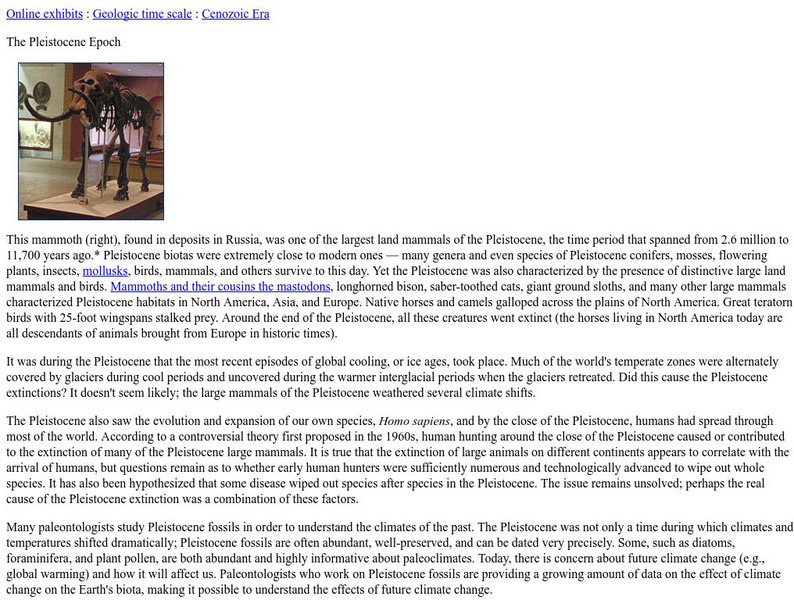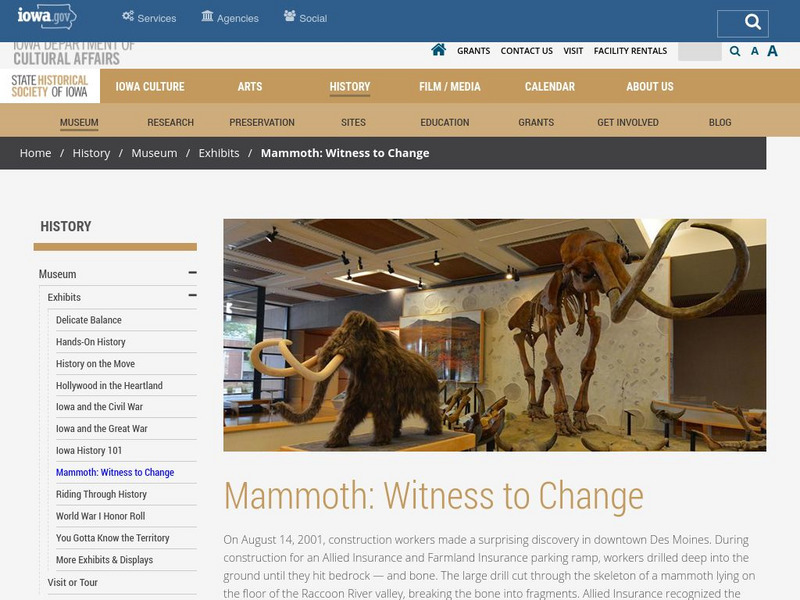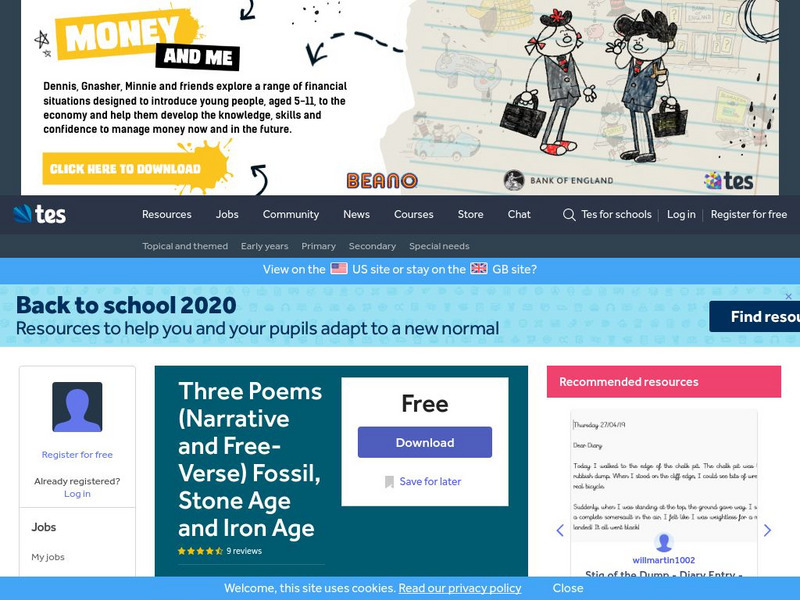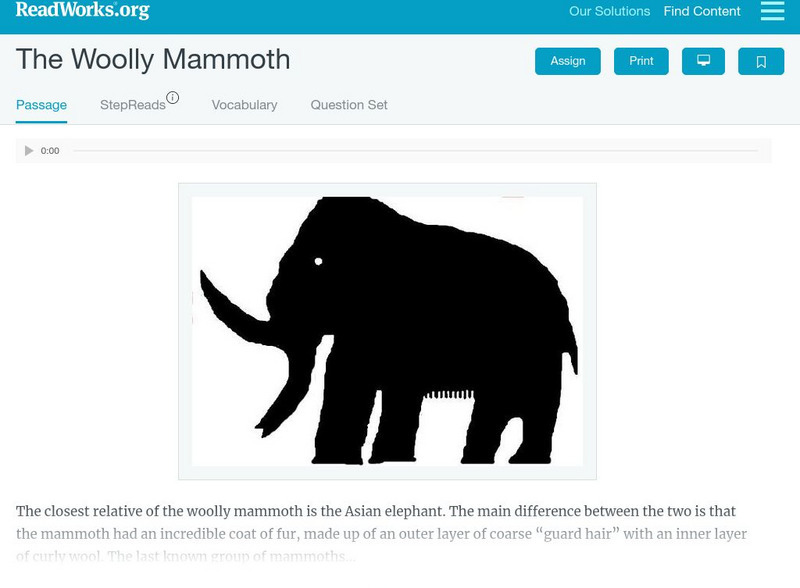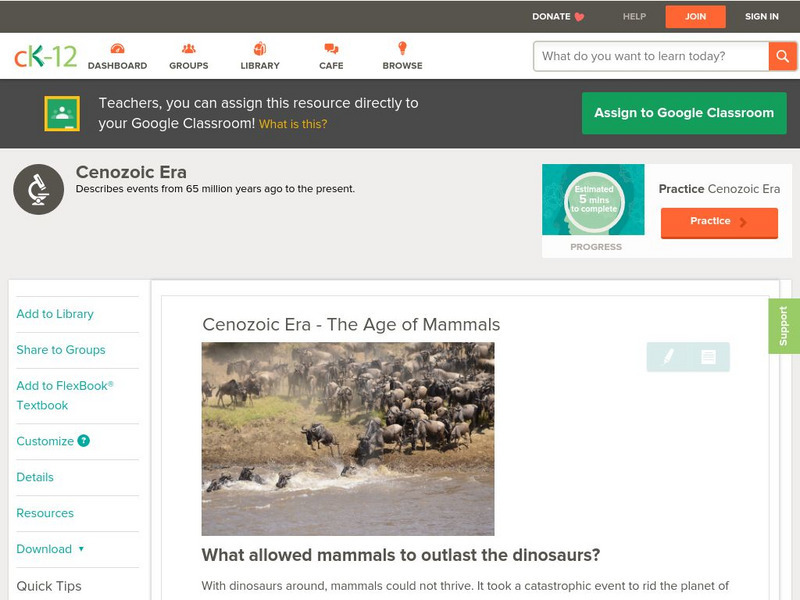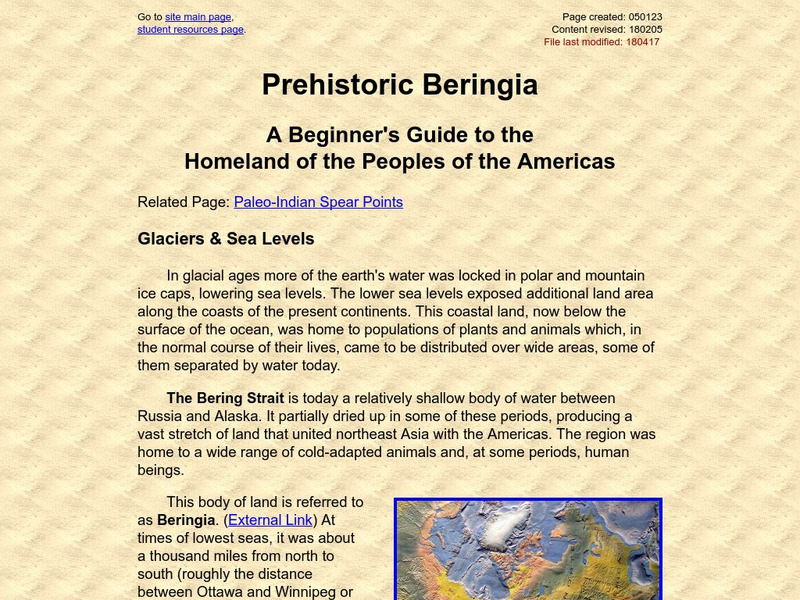PBS
Pbs Learning Media: Climate Change
This video segment adapted from NOVA explains the difference between weather and climate and features groundbreaking analysis revealing that Earth's climate has changed much faster than previously believed. [5:48]
University of California
Ucmp: The Pleistocene
The UCMP Berkeley provides a brief overview of the Pleistocene Era, including links to more information.
Other
Read Works: How Glaciers Change the World [Pdf]
Students read about how glaciers created land forms such as mountains and lakes during and after the Ice Age. A question sheet is available to help students build skills in reading comprehension.
Other
State Historical Society of Iowa: Mammoth: Witness to Change
An exhibition documenting the discovery of two mammoths and a mastodon, found in Wisconsin and Iowa. The Hebior mammoth was particularly significant as the excavation showed evidence that the mammoth had been killed by humans. Background...
TES Global
Tes: Three Poems (Narrative and Free Verse) Fossil, Stone Age and Iron Age
[Free Registration/Login Required] These narrative and free verse poems describe fossils, the Stone Age, and Iron Age. Entertaining graphic features accompany the poems.
Read Works
Read Works: The Woolly Mammoth
[Free Registration/Login Required] An informational text about the woolly mammoth, their importance to humans during the Ice Age, and possible reasons why they became extinct. A question sheet is available to help students build skills...
Read Works
Read Works: Survivor
[Free Registration/Login Required] An informational text about the life of Cro-Magnon people. A question sheet is available to help students build skills in reading comprehension.
CK-12 Foundation
Ck 12: Biology: Cenozoic Era the Age of Mammals
[Free Registration/Login may be required to access all resource tools.] Covers the Cenozoic Era, the age of mammals.
PBS
Nova: The Big Chill
Explore some of the explanations for the ice ages that have occurred in the Earth's history. The explanations are all related to conditions caused by plate tectonics.
BBC
Bbc: Science and Nature: Ice People 200,000 Years Ago
A look at Neanderthals, including their appearance, their life during the Ice Age, and their extinction. Follow suggested BBC and non-BBC links for further reading.
Other
Denver Museum of Nature and Science: Ice Age
Learn many facts about the Ice Age and the large animals alive in Ice Age North America, such as the muskox, short-faced bear, American lion, and the grounds sloth.
University of Illinois
University of Illinois Extension: Animals Past and Present
In English and Spanish this site deals with animal life in Illinois past and present. With sections on dinosaurs, animals in Illinois 65 million years ago, animals in Illinois 10 million years ago, and animals in Illinois today, this is...
University of California
Beringia Chronology: Prehistoric Beringia
The last ice age exposed the ocean floor between Asia and North America for thousands of years. During this time, Nomadic tribes from Asia used the "land bridge" to migrate into North America.
Other
Exploring the Past: An Archeological Journey
Through an overview of past archeological expeditions, the author recounts the "Land Bridge" theory and delves into the life of the first inhabitants of North America.
ClassFlow
Class Flow: Woolly Mammoths
[Free Registration/Login Required] Students will have the opportunity to learn new science vocabulary and learn about the Ice Age and the recent discovery of preserved mammoth. Assessment has been integrated into the flipchart as well as...
ClassFlow
Class Flow: Ice Age Vocabulary Game
[Free Registration/Login Required] This flipchart is an interactive flashcard game. At the end, students can test themselves with a matching activity.
Other
Southern Kings Consolidated School: Loess
This site describes loess in pretty good detail, also adding visual with two pictures. Great source for understanding how loess occurs and where it is found.
Curated OER
Exploring the Past: An Archeological Journey
Through an overview of past archeological expeditions, the author recounts the "Land Bridge" theory and delves into the life of the first inhabitants of North America.



